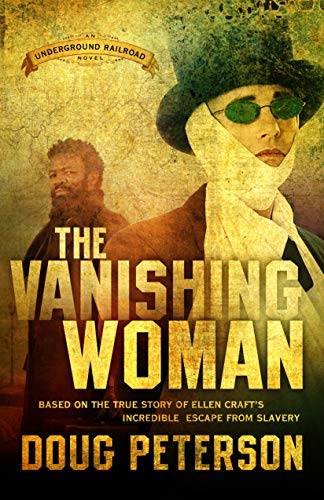

The Vanishing Woman
by Doug Peterson
Ellen Craft escaped from slavery in 1848 by posing as a white man, while her husband William pretended to be her slave. They took trains and steamboats north, escaping in plain view. When other passengers looked at her, they saw only an ailing planter from Georgia. Ellen Craft had vanished.
Ellen’s mother was a slave, but her father was her master, and she had skin as white as his. This enabled her to pose as a white man, in one of the boldest escapes in American history. The Vanishing Woman is based on a true story—an escape driven by the desire for freedom and family. William and Ellen decided they would not have children until they were free.
Their incredible story riveted a nation, and the couple put the Fugitive Slave Law to its first major test, bringing attention to their plight all of the way to the White House. The ultimate irony: This vanishing woman became one of the most visible symbols of freedom in nineteenth-century America.
They ran 1,000 miles to freedom and changed the country forever.
Ellen’s mother was a slave, but her father was her master, and she had skin as white as his. This enabled her to pose as a white man, in one of the boldest escapes in American history. The Vanishing Woman is based on a true story—an escape driven by the desire for freedom and family. William and Ellen decided they would not have children until they were free.
Their incredible story riveted a nation, and the couple put the Fugitive Slave Law to its first major test, bringing attention to their plight all of the way to the White House. The ultimate irony: This vanishing woman became one of the most visible symbols of freedom in nineteenth-century America.
They ran 1,000 miles to freedom and changed the country forever.

